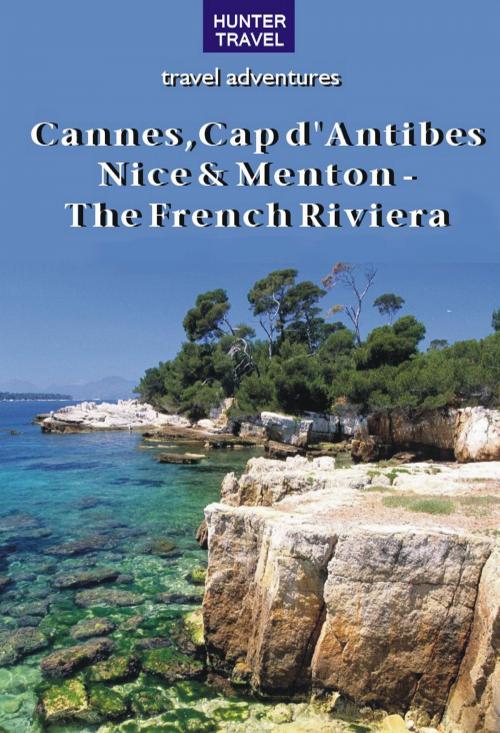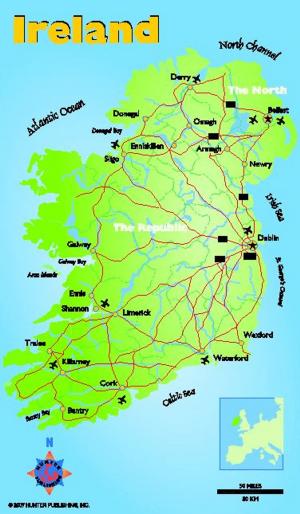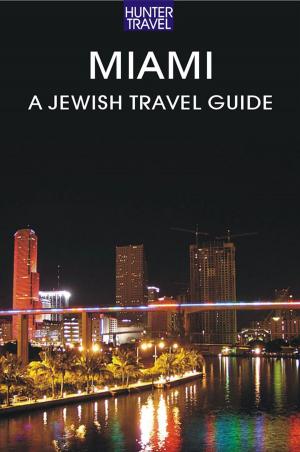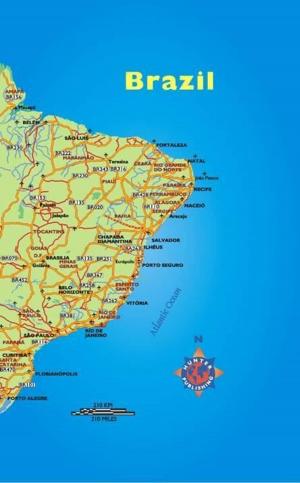| Author: | Ferne Arfin | ISBN: | 9781556500374 |
| Publisher: | Hunter | Publication: | June 22, 2012 |
| Imprint: | Hunter | Language: | English |
| Author: | Ferne Arfin |
| ISBN: | 9781556500374 |
| Publisher: | Hunter |
| Publication: | June 22, 2012 |
| Imprint: | Hunter |
| Language: | English |
In 1834, the British Lord Chancellor, Lord Henry Brougham, was on his way to Nice, still part of Italy and already a popular winter resort with English aristocrats. Because of a cholera epidemic in Provence, the governor of Nice had closed the border so Brougham and his daughter Eleanore were turned back. On their way to Grasse, they stopped for the night at an inn on what is today the Rue du Port in Cannes. Brougham was so taken with the little village of Canoïs that he stayed on, ultimately commissioning a splendid villa named after his daughter. Two years later, the crême de la crême of London high society, fleeing Britain's dull winter climate, followed Brougham to Cannes. By 1838, the port was under construction and the spectacular seafront, La Croisette, was underway. Ten years later, palace hotels were going up, A poor fishing village had been transformed into a fashionable winter resort with vast mansions, gardens bursting with exotic blooms, grand avenues and promenades. Cannes had become the coast's leading resort. Then there is the Cannes Film Festival. Every May, film stars and starlets, filmmakers, film buyers, film investors, producers, publicists and autograph seekers take over the whole town. If you can elbow your way into Cannes during the festival season, you'll find them parading along La Croisette, partying on the yachts that fill the harbor, wheeling and dealing in hotel rooms, restaurants and bars. And then there is Antibes. I discovered that I loved Antibes on my first trip to the South of France. It has remained my favorite town on the Riviera ever since. Every house seems bursting with flowers. Geraniums, oleanders, bougainvilla, grape vines, palms and yucca plants tumble out of pots and cover golden stone walls. American millionaires discovered Antibes-Juan les Pins at the beginning of the 20th century. They built enormous mansions on the Cap d'Antibes or took over ones built earlier. By the 1920s, they had turned it into a winter resort. Waterskiing was practically invented here. Whether you've never done it before or water ski to championship standards, this is the place do it. Other watersports, including parascending, wake boarding and windsurfing, are available along the beaches. There are also diving clubs and deep sea fishing excursions. So how about Nice? Nice is charmingly frivolous, like a dotty and unexpectedly girlish old lady. From the crisp meringue of the Belle Époque hotels on the Promenade des Anglais, to the candy-colored buildings along the Cours Saleya, it is a thoroughly delicious city. Everyone who visits Nice falls in love with the palm-shaded walks along the five-mile sea front on the Baie des Anges. In the Mont Boron Forestry Park (created in 1866 with the planting of 142 acres of Aleppo pines) visitors climb miles of marked paths in search of rare flowers or to savor the views of Saint Jean Cap Ferrat. Or they are drawn to the exquisite daily flower market on the Cours Saleya. Nice flirts with tourists and knowing that it is a well-practiced flirtation doesn't diminish its charm in the least. This is one of the those places where you can't help saying "Oooh" and "Ahhh" every time you turn a corner. A walk around Nice repays your time. Just outside Nice, the Alpine National Nature Park, the Parc Mercantour, is a wild and challenging high-mountain region where hikes will lead you to hidden and mysterious carvings or to wildlife not seen anywhere else in this part of Europe possibly even wolves. Just outside the park, there are more great hiking and mountain bike trails. They link small, medieval mountain villages, many with ramparts and castle ruins, where churches contain anonymous Renaissance masterpieces. This guide has everything you need to know about this, the Eastern Riviera what to see and do, the history, where to stay, the restaurants and much more, with color photos throughout.
In 1834, the British Lord Chancellor, Lord Henry Brougham, was on his way to Nice, still part of Italy and already a popular winter resort with English aristocrats. Because of a cholera epidemic in Provence, the governor of Nice had closed the border so Brougham and his daughter Eleanore were turned back. On their way to Grasse, they stopped for the night at an inn on what is today the Rue du Port in Cannes. Brougham was so taken with the little village of Canoïs that he stayed on, ultimately commissioning a splendid villa named after his daughter. Two years later, the crême de la crême of London high society, fleeing Britain's dull winter climate, followed Brougham to Cannes. By 1838, the port was under construction and the spectacular seafront, La Croisette, was underway. Ten years later, palace hotels were going up, A poor fishing village had been transformed into a fashionable winter resort with vast mansions, gardens bursting with exotic blooms, grand avenues and promenades. Cannes had become the coast's leading resort. Then there is the Cannes Film Festival. Every May, film stars and starlets, filmmakers, film buyers, film investors, producers, publicists and autograph seekers take over the whole town. If you can elbow your way into Cannes during the festival season, you'll find them parading along La Croisette, partying on the yachts that fill the harbor, wheeling and dealing in hotel rooms, restaurants and bars. And then there is Antibes. I discovered that I loved Antibes on my first trip to the South of France. It has remained my favorite town on the Riviera ever since. Every house seems bursting with flowers. Geraniums, oleanders, bougainvilla, grape vines, palms and yucca plants tumble out of pots and cover golden stone walls. American millionaires discovered Antibes-Juan les Pins at the beginning of the 20th century. They built enormous mansions on the Cap d'Antibes or took over ones built earlier. By the 1920s, they had turned it into a winter resort. Waterskiing was practically invented here. Whether you've never done it before or water ski to championship standards, this is the place do it. Other watersports, including parascending, wake boarding and windsurfing, are available along the beaches. There are also diving clubs and deep sea fishing excursions. So how about Nice? Nice is charmingly frivolous, like a dotty and unexpectedly girlish old lady. From the crisp meringue of the Belle Époque hotels on the Promenade des Anglais, to the candy-colored buildings along the Cours Saleya, it is a thoroughly delicious city. Everyone who visits Nice falls in love with the palm-shaded walks along the five-mile sea front on the Baie des Anges. In the Mont Boron Forestry Park (created in 1866 with the planting of 142 acres of Aleppo pines) visitors climb miles of marked paths in search of rare flowers or to savor the views of Saint Jean Cap Ferrat. Or they are drawn to the exquisite daily flower market on the Cours Saleya. Nice flirts with tourists and knowing that it is a well-practiced flirtation doesn't diminish its charm in the least. This is one of the those places where you can't help saying "Oooh" and "Ahhh" every time you turn a corner. A walk around Nice repays your time. Just outside Nice, the Alpine National Nature Park, the Parc Mercantour, is a wild and challenging high-mountain region where hikes will lead you to hidden and mysterious carvings or to wildlife not seen anywhere else in this part of Europe possibly even wolves. Just outside the park, there are more great hiking and mountain bike trails. They link small, medieval mountain villages, many with ramparts and castle ruins, where churches contain anonymous Renaissance masterpieces. This guide has everything you need to know about this, the Eastern Riviera what to see and do, the history, where to stay, the restaurants and much more, with color photos throughout.















